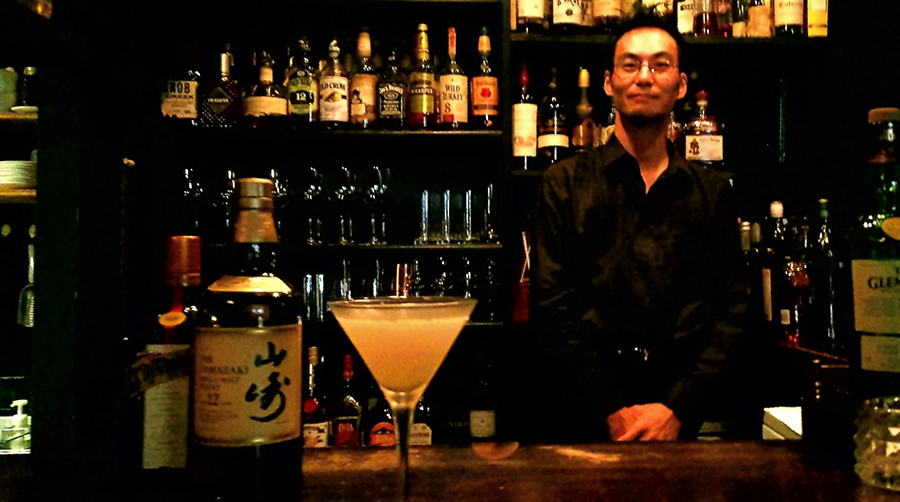The quality of Japanese whisky keeps rising, and we bartenders in Japan are always busy finding new ways to use it to make even better drinks for our customers.
Any good bartender knows that mixing cocktails is complicated work. The amount of water and even the size of the ice matter a lot when you want to make a good cocktail. The spoon you use to mix the cocktail must be exactly the right size, and you have to be careful not to put it too deep or too shallow into the glass as this will affect the taste of the cocktail. And of course, you must use the right alcohol for the job, one that won’t lose its taste and texture when mixed.
In my opinion, the defining feature of Japanese whisky is how polished it is and how mellow the taste is, which allows for various ways of mixing and drinking it. It can be enjoyed straight, on the rocks or mixed with water without losing its essential characteristics. This, I think, is what makes Japanese whisky different from Scotch, for example, which is often made to be enjoyed in a certain way.
Unfortunately, not all Japanese know how excellent and versatile their whisky is. Japanese whisky is often enjoyed by older drinkers while younger people don’t know much about it. This is rather sad, as Japanese whisky manufacturers have gone to great efforts to make whisky that appeals to as many people as possible.
So we Japanese bartenders are doing our part by introducing new whisky-based cocktails for young men and women. These youngsters often know much about cocktails and are interested in how we make them, but they know very little about the whisky itself.
A while ago, a young man ordered a new cocktail from the bartender, a drink called a Silent Third. This cocktail is quite popular with young people these days and is usually made with Scotch whisky. We put a lot of effort into making sure the whisky could be tasted in the cocktail, but even so, this cocktail is quite difficult to mix.
The bartender tried a few times using The Famous Grouse and Dewar’s but the customer was not happy with it. Another bartender then suggested using the Yamazaki … and the customer loved it! Ever since then, this particular customer has always asked us for whisky, mostly Yamazaki and other Japanese labels.
That’s the strength of Japanese whisky: it can be blended without losing its characteristics. I hear that bartenders in the West are beginning to notice this as well!
Published: September 2, 2015Author: Scheidecker

